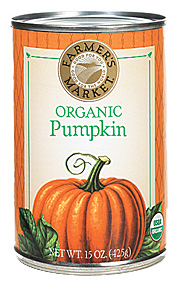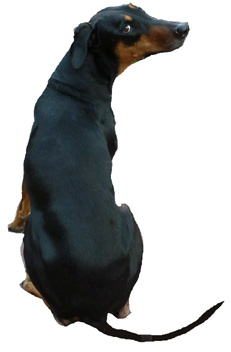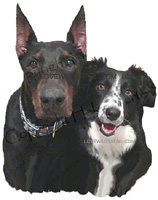I’ve been a dedicated Costco shopper since the 80’s. There was a gap of a year or so in all those decades where I lapsed when I was settling from the west coast to the east coast, but once I found roots, I found a Costco and rekindled my relationship with my favorite warehouse store.
 When I prepare for my Costco shopping trips, I make a list of what supplies are dwindling. In fact, except for when Costco moves things on me, I pretty much know where everything on my list is located, so I make the list in sections, to expedite my shopping. For anyone who’s shopped at Costco, can you imagine having to run from one corner of the megastore to another to another and so on because you had no list? No plan? What a time waster that would be!
When I prepare for my Costco shopping trips, I make a list of what supplies are dwindling. In fact, except for when Costco moves things on me, I pretty much know where everything on my list is located, so I make the list in sections, to expedite my shopping. For anyone who’s shopped at Costco, can you imagine having to run from one corner of the megastore to another to another and so on because you had no list? No plan? What a time waster that would be!
Lists keep us organized, and for what little time they take to make, are tremendous time savers. I use them for daily goals I want to meet, and when there’s something out of the ordinary I have to do, I usually put it on a Post-It note and stick it to the front door to remind me. For example, I collect newspapers for a rescue I’m affiliated with, and occasionally, I get an email from a former co-worker who still collects for me. “Hey, can you pick up a load of papers this weekend? I’ve toted them downstairs. They’ll be in the lobby. Security knows.” Though this happens either monthly or bi-monthly, I have a habit down which I started from day one. Up goes the note. I don’t want to forget after she went out of the way to save the papers and hauled them down stairs for me.
Lists work in training, too. We call them training plans, and they function in much the same way as any other list. First, we check on what we have. So let’s say we have 80 pounds of excited, wiggly dog who jumps on us when we come home. (Oh, to be missed and loved so much!) OK. Then we check on what we want. In this case, we want those 80 pounds of excited, wiggly dog to control himself when we come home by doing a sit. Then he’ll get his attention and we’ll get to walk in the door without having to brace ourselves. We know both ends of the plan, then the training plan is created with the ingredients to get from start to finish.
 An efficient trainer will prepare and use training plans to change behavior. There may be adjustments to the plan as training progresses, but they’re generally small tweaks that help the process along. Think about your shopping list. Canned pumpkin is on your list and on sale at 50% off! (Canned pumpkin is great to have on hand when your dog’s either constipated or has diarrhea.) You’ll tweak your list and add a few more cans due to the bargain of a deal you’re facing.
An efficient trainer will prepare and use training plans to change behavior. There may be adjustments to the plan as training progresses, but they’re generally small tweaks that help the process along. Think about your shopping list. Canned pumpkin is on your list and on sale at 50% off! (Canned pumpkin is great to have on hand when your dog’s either constipated or has diarrhea.) You’ll tweak your list and add a few more cans due to the bargain of a deal you’re facing.
The same thing happens when following a training plan. Sometimes you get a bargain and take it! A dog may skip over steps in a training plan due to the nature of the breed. For example, when a trainer is following a training plan to teach a retrieve, she may find her Golden Retriever student picks up an object immediately, while her Dobermann student takes more time and patience to get lift off. The Golden Retriever even has the word “retrieve” in his breed name, so this scenario wouldn’t be surprising. And, we’d take the skip ahead and move along on the training plan to the steps where the Golden is challenged.
On the other hand, our Dobermann student may need another set (5 repetitions) with criteria set at just looking at the dumbbell we’d like him to eventually fetch. (Definitions: our training session consists of the total sets we train, and each set contains 5 reps. Our dog should get 4 out of 5 reps correct before we move to the next level on our training plan.) So once our Dobie is looking at the dumbbell at least 4 out of 5 reps, we can move to dipping head closer to the dumbbell and progress from there.
Here’s another example. Can our dog sit in place for 2 seconds 4 out of 5 times? If yes, we move up to 5 reps at 4 seconds each. If no, we repeat 5 reps at 2 seconds. If a dog can’t sit for 2 seconds, how can we expect him to sit for 4? If he can’t sit for 2 seconds anymore than 2 out of 5 times, we would even drop down to 1 second until he could sit 4 out of 5 times at that level. The process is about increasing criteria at the dog’s pace so the dog succeeds. Set up challenges to success, not failure!
 I remember training my dog Raven to sit when she was a youngster years ago. I celebrated one second at a time, day after day, patiently building upon our reps and time until she could hold a sit for well over a minute, comfortably. It was a labor of patience through using a training plan that got us to long sit stays while she waited for dinner and at other exciting moments like start line stays in agility.
I remember training my dog Raven to sit when she was a youngster years ago. I celebrated one second at a time, day after day, patiently building upon our reps and time until she could hold a sit for well over a minute, comfortably. It was a labor of patience through using a training plan that got us to long sit stays while she waited for dinner and at other exciting moments like start line stays in agility.
Creating stable behaviors in early stages is much easier through increments, then trying to change the sum of a chain of behaviors at the end.
Make sure a well written training plan is in place before you go out to train. Follow it, as you would a grocery list, and you will be a most efficient trainer.



